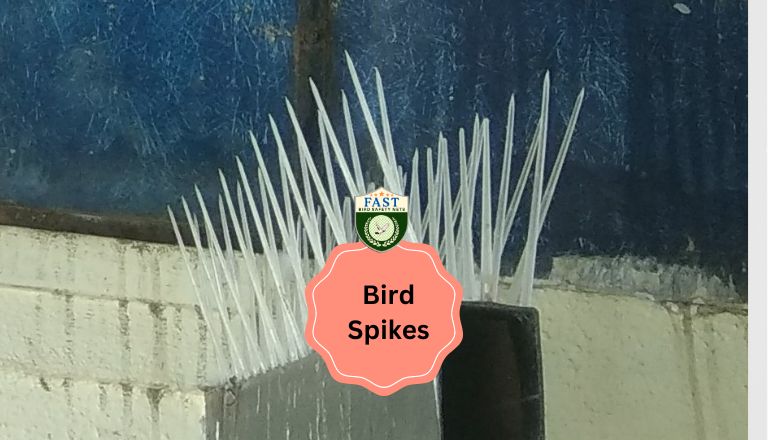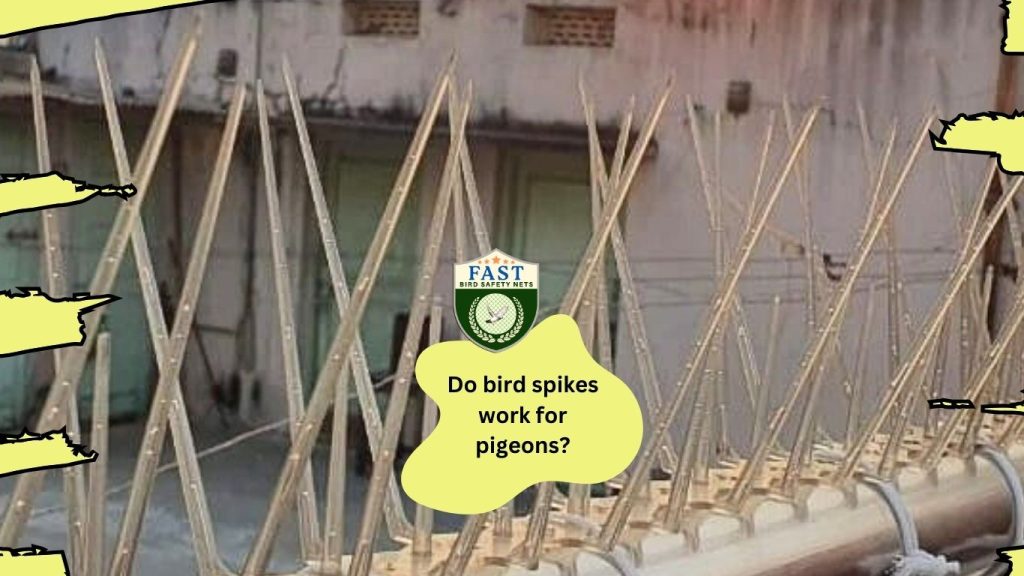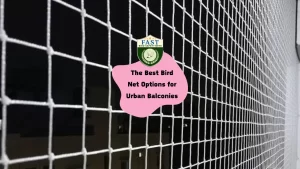Pigeons are notorious for causing problems in urban environments, from property damage to health hazards. As property owners seek solutions to deter pigeons, bird spikes have emerged as a popular option. However, the effectiveness of bird spikes in deterring pigeons is a topic of debate. In this comprehensive guide, we’ll delve into the effectiveness of bird spikes for pigeon, exploring how they work, factors influencing their efficacy, and considerations for successful implementation.
Understanding Bird Spikes:
Bird spikes are physical deterrents designed to prevent birds, including pigeons, from landing or perching on surfaces. They consist of rows of pointed metal or plastic rods attached to a base, creating an uneven and uncomfortable surface for birds to land on. Bird spikes are commonly installed on ledges, sills, rooftops, and other flat surfaces where birds roost or nest.

How Bird Spikes Work for Pigeons:
Bird spikes work by creating an obstacle that deters pigeons from landing or perching on treated surfaces. When pigeons attempt to land on a surface protected by bird spikes, they encounter the pointed rods, which make it uncomfortable and impractical for them to remain. Over time, pigeons learn to avoid areas with bird spikes, seeking alternative roosting or nesting sites.
Effectiveness of Bird Spikes for Pigeon:
The effectiveness of bird spikes in deterring pigeons depends on various factors, including:
Installation: Proper installation is crucial for the effectiveness of bird spikes. They should be securely attached to surfaces using adhesive, screws, or cable ties to ensure stability and durability. Additionally, the spacing and angle of the spikes should be optimized to cover the entire landing area and prevent pigeon from finding gaps to perch on.
Location: Bird spikes are most effective when installed in areas where pigeons frequently roost or nest. Common locations include building ledges, window sills, balcony railings, rooftop edges, and outdoor signage. By targeting these areas, property owners can create bird-free zones and reduce pigeon activity.
Maintenance: Regular maintenance is essential to ensure the ongoing effectiveness of bird spikes. Over time, debris, bird droppings, and other materials may accumulate on the spikes, reducing their effectiveness. Property owners should periodically clean and inspect the bird spikes to remove debris and maintain their deterrent effect.
Population Density: The effectiveness of bird spikes may vary depending on the density of the pigeon population in the area. In areas with high pigeon activity, additional deterrent measures may be necessary to supplement the use of bird spikes effectively.
Considerations for Successful Implementation:
When considering the use of bird spikes for deterring pigeons, property owners should keep the following considerations in mind:
Legal Considerations: Before installing bird spikes, property owners should check local regulations and ordinances governing the use of bird control devices. Some areas may have restrictions on the use of certain types of bird spikes or require permits for installation.
Aesthetic Impact: While bird spikes are effective deterrents, property owners should consider the aesthetic impact of their installation. In some cases, bird spikes may alter the appearance of buildings or structures, particularly in highly visible areas. Choosing low-profile or discreet bird spikes can help minimize their visual impact.
Compatibility: Bird spikes may not be suitable for all surfaces or structures. Property owners should assess the compatibility of bird spikes with the materials and design of their buildings before installation. Additionally, certain architectural features or design elements may require customized bird spike solutions.
Integrated Pest Management: Bird spikes are most effective when used as part of an integrated pest management approach that combines multiple deterrent methods. Property owners should consider complementary strategies such as bird netting, repellents, habitat modification, and sanitation practices to achieve comprehensive pigeon control.
Conclusion:
While bird spikes can be effective deterrents for pigeons, their success depends on factors such as proper installation, location, maintenance, and compatibility with the property. By understanding how bird spikes work and considering key factors for successful implementation, property owners can effectively deter pigeon and minimize the associated problems.






